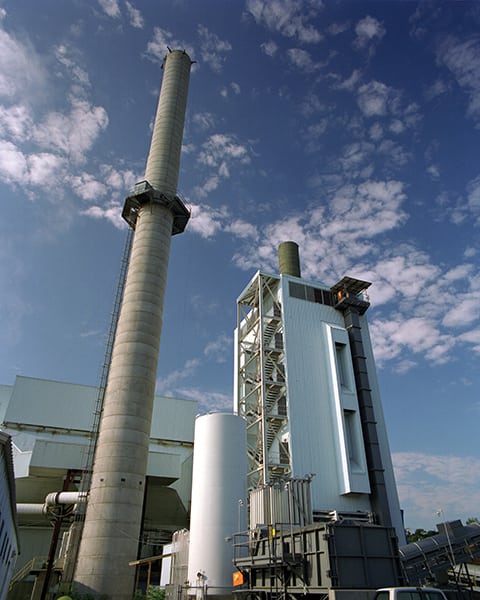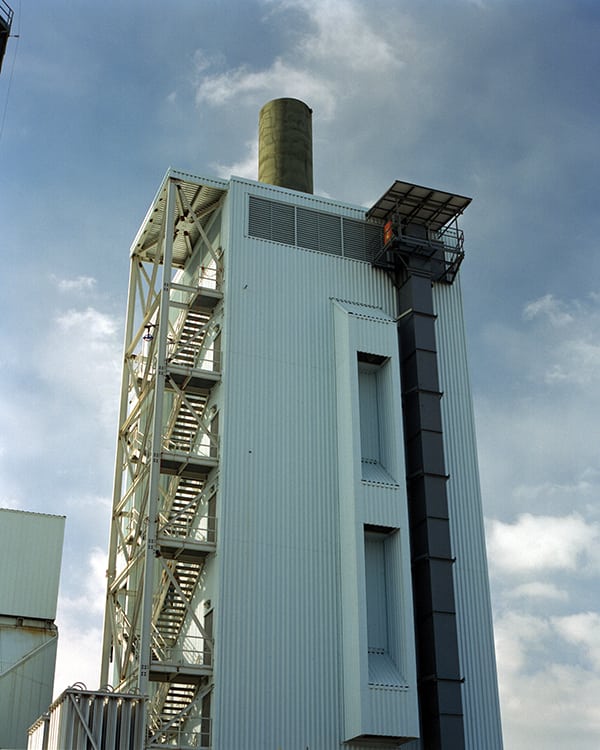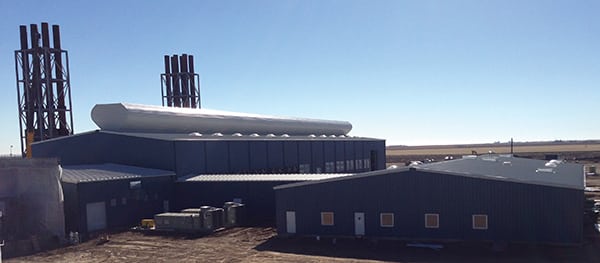Tougher environmental regulations are pushing for more energy efficient coal plants. Every kilowatt counts, and the boiler building ventilation system can free up many of them.
With the final Clean Power Plan rule covering existing power plants scheduled for release this summer, and the amount of flexibility that has been afforded to the states to meet emissions targets, states have a variety of options that can be explored to meet this regulation. Plant upgrades, improving energy efficiency, fuel switching, and promoting renewable energy are just a few. With these options in mind, generators that expect coal-fired units to remain operational in the long term need to start evaluating all plant systems for potential auxiliary power savings.
In all thermal power plants a portion of the electricity produced is needed to operate the plant’s auxiliary systems. These consist of fans, pumps, compressors, and even plant lighting. With more efficient plant auxiliary systems, more electrical energy is available for sale, and the plant operates at a higher efficiency, with reduced carbon pollution.
One system to consider when evaluating potential energy savings is the boiler building ventilation system. In coal-fired power plants, a large amount of heat is released during the combustion process. The intent of this process is to transfer thermal energy from the combustion process to a working fluid (water and steam) to be used for electric power generation. In order to contain as much thermal energy in the boiler as possible, thick insulation is installed on the boiler casing to retain thermal energy in the working fluid.
Unfortunately, insulation is unable to contain all the thermal energy, and some heat is transferred to the ambient surroundings inside the boiler building. In addition to the heat from combustion, many other forms of heat generation exist within these buildings. All the fans, pumps, and compressors required to operate the plant are driven either by electric motors or steam turbine drives. Electric motors convert electrical energy to mechanical energy. This conversion of energy is not ideal, and the inefficiencies result in heat rejection to the environment. Steam turbine drives have the same issue as the boiler, and insulation is unable to contain all their thermal energy.
Cool-Down Options
If they are not controlled, heat losses from all sources in the boiler building would increase internal ambient temperatures to a point where workers would not be able to enter the building for safety reasons. To counter the large amount of heat generated from combustion and equipment, boiler buildings are equipped with very large ventilation systems to continuously draw in cooler air from outside and remove hot air from within the building.
At the majority of coal-fired boiler buildings, a forced ventilation system is used to remove hot air from the structure and draw cooler air in. Large fans are installed on the roof, with intake louvers at the base of the structure to accomplish the needed ventilation. Because of the large amounts of air being moved, some boiler building ventilation systems may require in excess of 450 kW of operating power for a single boiler.
In addition to using auxiliary power for operation, forced ventilation systems require regular maintenance to remain operational. Routine maintenance tasks include belt replacements, motor rewinds, bearing replacements, and fan realignments. Some existing systems may also contain known hazardous materials such as asbestos insulation or lead paint. Over time, the asbestos insulation will deteriorate and fall off, and lead paint begins to chip or peel from surfaces. These substances are hazardous to workers and require special, costly removal processes.
However, alternatives to forced ventilation systems exist that both reduce auxiliary loading and the need for continuous maintenance activities. Natural ventilation systems, sometimes referred to as gravity ventilation systems, are typically used as replacements for forced ventilation systems. Their designs are simple in nature, have very few moving parts, and require little to no maintenance.
Leveraging the Stack Effect
In a natural ventilation system, large openings in a structure’s roof are used in lieu of the smaller openings that are common to most forced ventilation systems. These larger openings promote movement of hotter, buoyant air out of the structure, resulting in the stack effect. Multiple sources of heat rejection inside the boiler building will drive the ambient air temperature up until it is higher than the ambient temperature outside the building.
The difference in temperature creates a difference in air density and air pressure (Figure 1). Because the warmer air inside the boiler building has a lower density than the cooler air outside, a difference in air pressure is created, with the higher pressure located outside of the boiler building.
 |
| 1. Stacks are stacks. The same forces that govern pressure differentials in combustion system stacks will apply to boiler building ventilation. Courtesy: National Renewable Energy Laboratory (NREL) |
Due to this developed pressure differential, cooler, outdoor ambient air will naturally try to infiltrate the lower portion of the structure while trying to equalize internal/external air pressures. In the case of a forced ventilation system, the fans induce a large pressure differential that drives the movement of air. Because the pressure differential is large, only a small opening in the roof is required. By contrast, the pressure differential in a natural ventilation system is much smaller than that of a forced ventilation system; therefore, a larger open area on the top of the boiler building is required to lessen flow restrictions and compensate for the reduced pressure differential.
Various commercial products are available to appropriately address the need for additional open roof area. Depending on the heat distribution within the building and the ambient environment, a simple louver may suffice. This will provide the building with additional open roof space while protecting the building’s contents from weather elements such as rain. These louvers can either be manually adjusted or motor driven to vary the amount of roof opening required for adequate ventilation.
For structures requiring high airflow movement, a clamshell-style natural ventilator may be the most appropriate solution (Figure 2). A clamshell-style natural ventilator will provide the same benefits as a louver; however, the percentage of free area to face area will be greater.
For a louvered application, the free area to face area ratio typically ranges from 50% to 60%. With a clamshell-style natural ventilator, the free area to face area is 100%. This equates to more equivalent roof opening area while still protecting the interior from outdoor weather events. Similar to a louvered application, dampers inside the clamshell natural ventilator can be opened or closed to allow the appropriate amount of airflow in and out of the structure. Manual chain drive or motor actuators can be provided to accomplish this function.
An equation for estimating stack effect ventilation follows:
Where:
Qs = ventilation airflow rate
Cd = discharge coefficient for an opening
A = cross-section area of opening
g = gravity
Hd = distance between the middle upper and lower openings
TI = average indoor temperature
To = average outdoor temperature
Wind-Powered Ventilation
Wind can also play a role in improving the efficiency of a natural ventilation system. When a building is exposed to winds, the windward side of the structure will experience an increase in ambient pressure, while the leeward side will experience a decrease in ambient pressure. Similar to the buoyancy forces that contribute to the stack effect, the pressure of the windward and leeward sides of the structure will try to equalize. With adequate openings in the sides of a boiler building (Figure 3), additional air movement can be achieved, resulting in lower indoor ambient temperatures.
 |
| 3. Wind-cooled structure. Louvers placed around a building can take advantage of wind cooling. Courtesy: NREL |
The equation for estimating airflow induced by wind follows:
QWIND = A x V x k
Where:
QWIND = volume of airflow
V = outdoor wind speed
A = area of smallest opening
k = coefficient of effectiveness
Additional Considerations
Natural ventilation systems can be designed to operate without the need for electrical power. In some instances, it may be advantageous to utilize power for adjustments of the effective open space on the rooftop, but for most of the systems’ operation, the equipment is static, resulting in minimal wear and tear on components.
However, a conversion to natural ventilation may not be practical for all coal-fired units. A feasibility and cost/benefit analysis should be performed to determine the amount of effective area required for natural ventilation within a structure. The required area might not be attainable due to existing roof configuration; in such cases, at best, a partial conversion may be possible.
Some plants don’t have to worry about this issue. There are a number of coal-fired units (located in “fair weather” states) that have been constructed as outdoor units. This “open” type of construction means that no building surrounds the boiler, steam turbine, and auxiliary systems; thus, no ventilation system is required or installed.
Given that only the most energy efficient coal plants are expected to remain economic once the Clean Power Plan is finalized, every kilowatt of auxiliary power savings will be needed to increase the odds of continued operation. The conversion from a forced ventilation system to a natural ventilation system can free up approximately 90% of the power used by a purely forced ventilation system. For a typical 600-MW power plant, this can equate to approximately 400 kW of power savings.
Even without the regulatory consideration, existing forced ventilation systems will continue to age, become increasingly unreliable, and replacement parts will be increasingly harder to find. For all of these reasons, a new approach to boiler building ventilation using natural forces should be considered for future operation. ■
— Brandon Bell (bbell@valdeseng.com) is a senior project manager for Valdes Engineering Co. and a POWER contributing editor.












